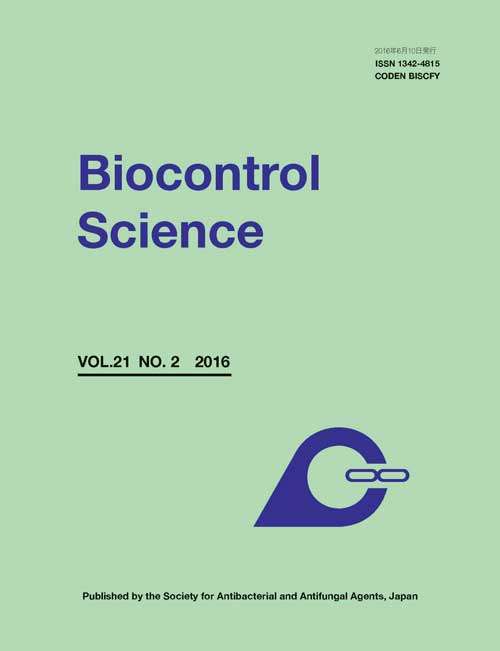Volume 21, Issue 2
Displaying 1-9 of 9 articles from this issue
- |<
- <
- 1
- >
- >|
Review
-
Article type: Review
2016 Volume 21 Issue 2 Pages 63-72
Published: 2016
Released on J-STAGE: June 28, 2016
Download PDF (131K)
Original
-
2016 Volume 21 Issue 2 Pages 73-80
Published: 2016
Released on J-STAGE: June 28, 2016
Download PDF (1786K) -
2016 Volume 21 Issue 2 Pages 81-89
Published: 2016
Released on J-STAGE: June 28, 2016
Download PDF (853K) -
2016 Volume 21 Issue 2 Pages 91-98
Published: 2016
Released on J-STAGE: June 28, 2016
Download PDF (467K) -
2016 Volume 21 Issue 2 Pages 99-111
Published: 2016
Released on J-STAGE: June 28, 2016
Download PDF (1652K) -
2016 Volume 21 Issue 2 Pages 113-121
Published: 2016
Released on J-STAGE: June 28, 2016
Download PDF (2278K) -
2016 Volume 21 Issue 2 Pages 123-130
Published: 2016
Released on J-STAGE: June 28, 2016
Download PDF (502K)
Note
-
2016 Volume 21 Issue 2 Pages 131-134
Published: 2016
Released on J-STAGE: June 28, 2016
Download PDF (188K) -
2016 Volume 21 Issue 2 Pages 135-138
Published: 2016
Released on J-STAGE: June 28, 2016
Download PDF (252K)
- |<
- <
- 1
- >
- >|
